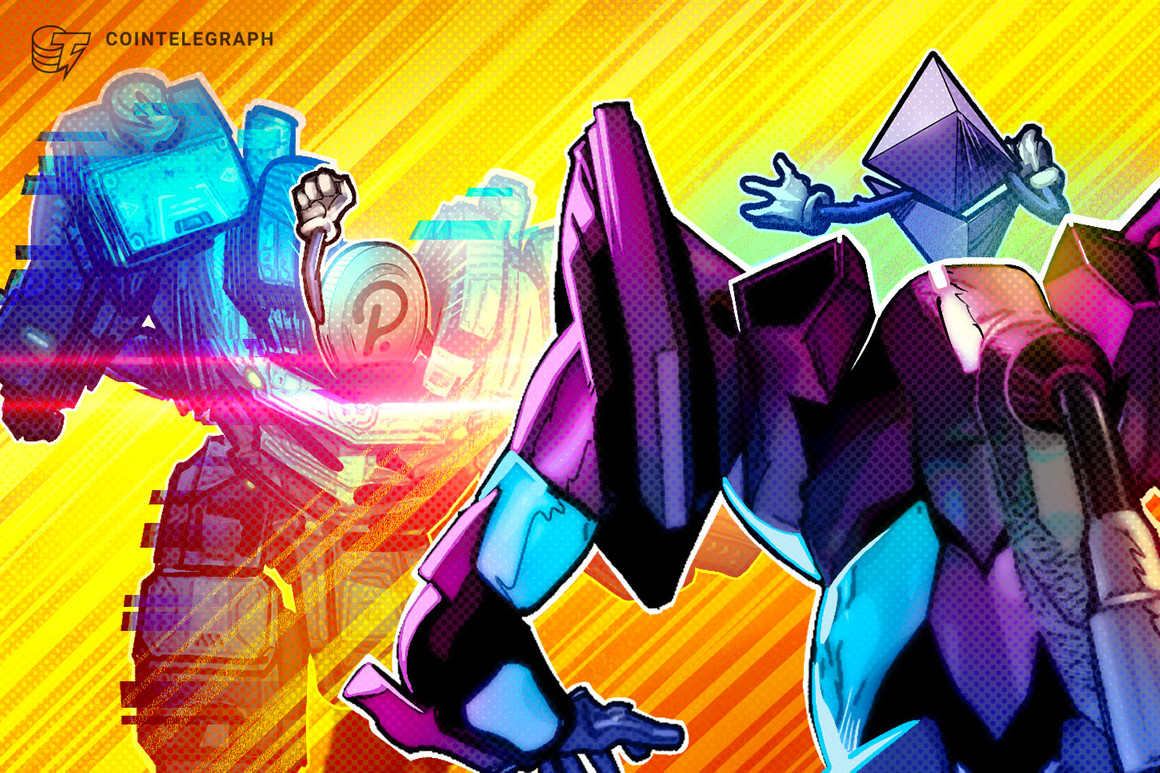For most casual digital asset investors, the Ethereum 2.0 upgrade promises to be a game-changing event that will improve efficiency, reduce network co
For most casual digital asset investors, the Ethereum 2.0 upgrade promises to be a game-changing event that will improve efficiency, reduce network costs and propel the entire blockchain and crypto space closer to a Web3 reality.
Ethereum has been struggling with a lack of scalability and skyrocketing gas fees, and since it serves as the largest smart contract and DApp development platform, the move to a more reliable and scalable proof-of-stake (PoS) blockchain will be a welcome reprieve.
Unbeknownst to most casual investors, however, Polkadot’s Substrate platform has been making massive inroads in the development of a parallel decentralized internet infrastructure that many believe will eventually eclipse Ethereum’s.
Related: The Polkadot architecture and introduction to the Substrate infrastructure
Ever since the release of the Polkadot white paper, its value as a bridge between Ethereum’s ecosystem and the many possibilities that make up a Web3 internet experience has been at the forefront of Polkadot’s main selling points.
So, how exactly does Polkadot compare to Ethereum? What’s Ethereum’s current progress towards a decentralized internet, and have Polkadot’s parachains become a viable threat to the dominant smart contract network? Here is a quick look at the technical details that differentiate Polkadot’s ecosystem from Ethereum’s upcoming upgrade.
Two routes to the decentralized internet
To understand the value that Polkadot brings to the table, we must first compare Polkadot’s Substrate and how it is different from what Ethereum is currently offering.

There is no denying that, at one point, Ethereum was considered a revolutionary technology and a sought-after platform for DApp development. Over the years, however, scalability has become Ethereum’s Achilles heel. With an estimated 1 million transactions per day, the Ethereum blockchain is only capable of processing 15 transactions per second (TPS), leading to volatile gas fees. Although this number is set to increase with the upgrade to Ethereum 2.0, it will still fall way short of traditional centralized infrastructures such as Visa, which can theoretically process well over 1,700 TPS.

Adding to its slow and congested network, Ethereum’s outdated consensus algorithms consume up to 112.15 TWh per year, which is comparable to the power consumption of Portugal or the Netherlands. Simply put, Ethereum heavily relies on a proof-of-work (PoW) algorithm that requires computationally intensive mining to add new blocks to the chain and confirm transactions.
Related: Inside the blockchain developer’s mind: Proof-of-work blockchain consensus
Ethereum 2.0 plans to address these concerns by moving from a PoW algorithm to a more efficient PoS algorithm, which will eventually allow Ethereum to go carbon-neutral and achieve more speed.

Ethereum 2.0 will also make use of sharding as a scalability solution that will see the network broken into smaller pieces that can process transactions in parallel. In theory, this will allow Ethereum to process an infinite number of transactions per second, but in practice, it will be limited by the number of shards created.
To date, the shift to Ethereum 2.0 is still a work in progress, even though the testnet is live. Frustrated by the delays, ambitious project developers like Ethereum co-founder Gavin Wood left Ethereum to build the Web3 Foundation and Parity Technologies. Parity Technologies and the Web3 Foundation focus primarily on developing three main technologies: Parity Ethereum (also known as Serenity), Parity Substrate and Polkadot.
Ultimately, the goal of these organizations and projects is to fast-track the Web3 vision.
Their victories and defeats
As a core blockchain infrastructure company, Parity Technologies provides several tools and software that allow developers to launch their blockchains quickly and easily. The Parity Substrate is a toolkit for building custom blockchains from the ground up, and it powers some of the most popular blockchains in the world, such as Polkadot, Kraken, and Chainlink.
Parity Ethereum, on the other hand, is the software that runs Ethereum 2.0 clients such as Geth and Prysm. Parity’s main contribution to Polkadot is the Substrate framework, which is used to build custom blockchains or parachains on top of the Polkadot Relay Chain.
Related: How Polkadot’s parachain auctions make a decentralized Web3 possible
Compared to Ethereum’s existing system as well as its upcoming sharding framework, Substrate is very modular and allows for custom blockchains to be built. Developers can pick and choose the features they want for their parachains down to the degree of technical difficulty they can handle.
Here are some examples of how the functions of blockchains built with Substrate can differ:
- Zeitgeist has prediction markets (similar to sports betting or betting on what the weather will be like next week) and uses them for on-chain governance.
- KILT is a highly complex system for decentralized identifiers…
cointelegraph.com
